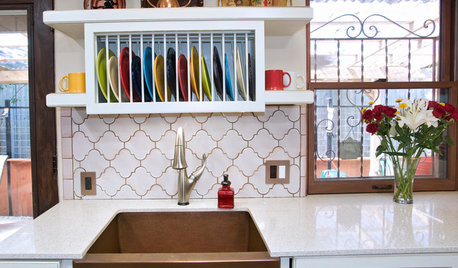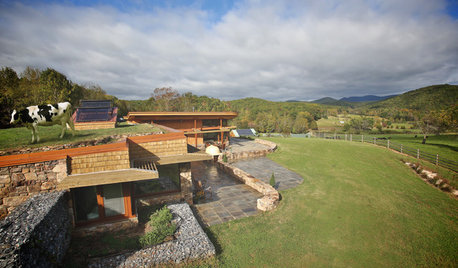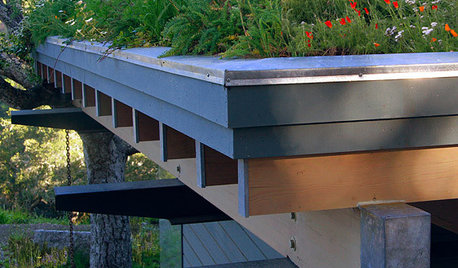Ways to ground roof-mounted Sattelite Dish
dgeist
11 years ago
Related Stories

KITCHEN DESIGNDish-Drying Racks That Don’t Hog Counter Space
Cleverly concealed in cabinets or mounted in or above the sink, these racks cut kitchen cleanup time without creating clutter
Full Story
TASTEMAKERSPro Chefs Dish on Kitchens: Michael Symon Shares His Tastes
What does an Iron Chef go for in kitchen layout, appliances and lighting? Find out here
Full Story
HOUZZ TOURSHouzz Tour: Earthiness Grounds a Contemporary Louisiana Home
Generous wood and thoughtful design on a 32-acre site, pond included, make for a warm-looking home that naturally fits its owners
Full Story
CONTEMPORARY HOMESHouzz Tour: A Brave Addition Breaks New Ground
An Edwardian cottage gets a radical renovation with a dynamic deck that wraps a couple and 2 children in style
Full Story
HOUZZ TOURSHouzz Tour: A Self-Sufficient Farmhouse With a Sheep-Pasture Roof
LEED Platinum certification and a soil-covered top make this pastoral Virginia home green in more ways than one
Full Story
4 Easy Ways to Renew Your Bathroom Without Remodeling
Take your bathroom from drab to fab without getting out the sledgehammer or racking up lots of charges
Full Story
DECORATING GUIDES10 Inspired Ways to Refresh Your Mantel Now
Postholiday blahs don't stand a chance on your mantel when you incorporate these ways to accessorize and light it
Full Story
DECORATING GUIDESDecorating Secrets: Picture-Perfect Way to Hang Art
Save your drywall with these easy steps for hanging framed pieces
Full Story
EARTH DAYHow to Install a Green Roof
Covering a roof with low-maintenance plants has benefits beyond just beauty. Get the details here
Full Story
THE HARDWORKING HOMESmart Ways to Make the Most of a Compact Kitchen
Minimal square footage is no barrier to fulfilling your culinary dreams. These tips will help you squeeze the most out of your space
Full StoryMore Discussions










Ron Natalie
dgeistOriginal Author
Related Professionals
Wellesley Electricians · Forest Grove General Contractors · Los Lunas General Contractors · Nampa General Contractors · Rohnert Park General Contractors · Wright General Contractors · Bell Gardens Solar Energy Systems · Forest Park Solar Energy Systems · Castle Rock Home Automation & Home Media · Gilbert Home Automation & Home Media · North Merrick Home Automation & Home Media · Oceanside Home Automation & Home Media · Philadelphia Home Automation & Home Media · Wheaton Home Automation & Home Media · East Cleveland Home Automation & Home Mediayosemitebill
brickeyee
dgeistOriginal Author
yosemitebill
weedmeister
dgeistOriginal Author
yosemitebill
kalining
brickeyee